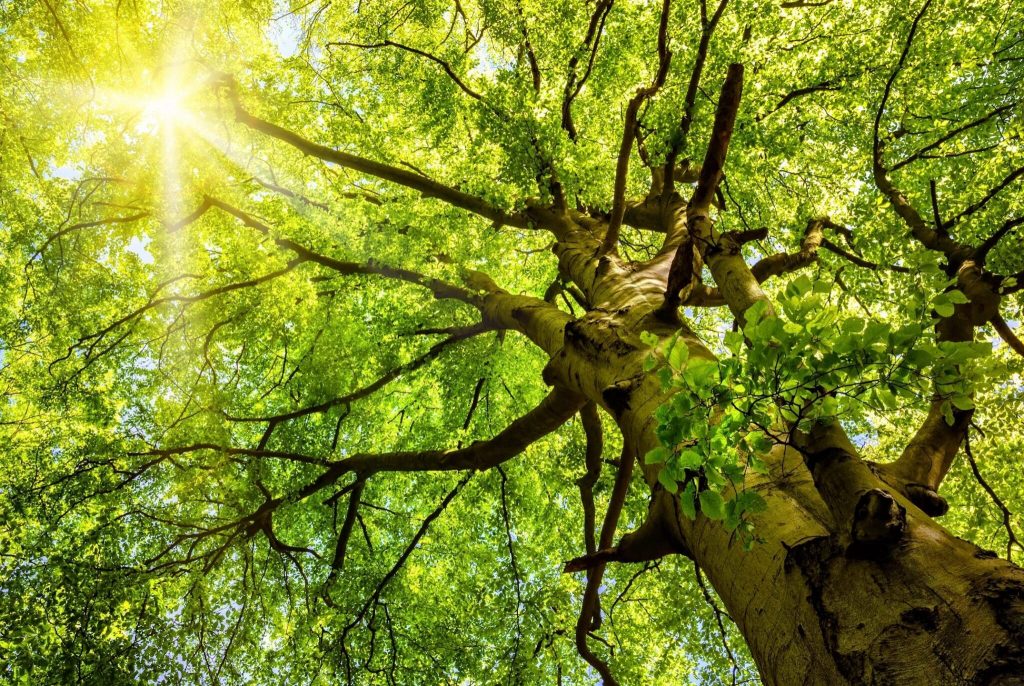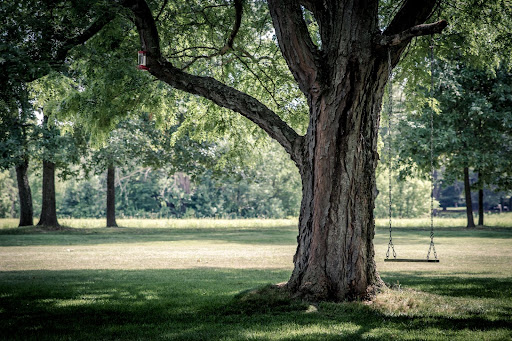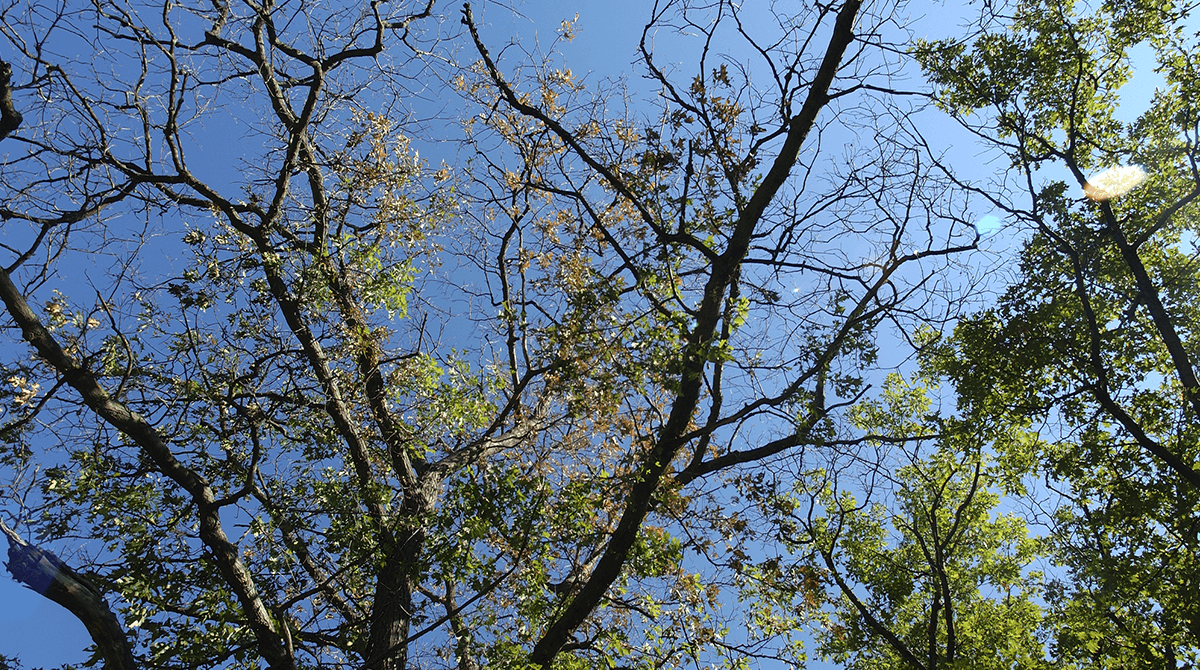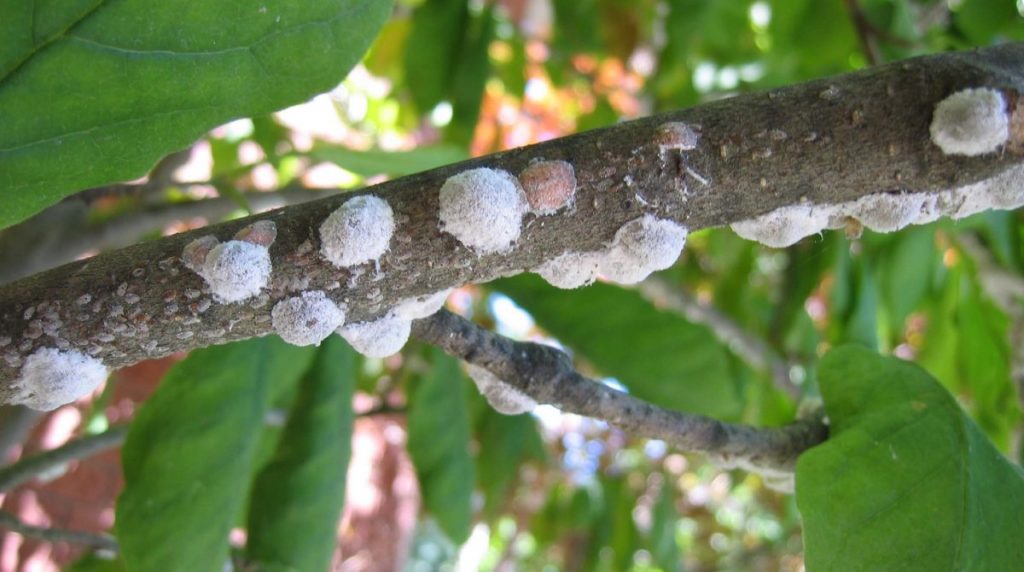
Date September 10, 2022
Category
Fall is a beautiful time of year, but it’s also when certain tree diseases start to show up. If you’re unsure of what to look for or don’t have experience with tree disease management, stay tuned. In this blog post, we will discuss common fall tree diseases in North Texas and how to manage them. We’ll also provide tree care tips on prevention so that your trees stay healthy year-round!
Early detection is key. The longer your tree is infected, the less likely it will recover. If your trees show any of the following signs, immediately contact a TreeNewal tree care expert at (817) 592-6846.
Fall Tree Disease Guide
Since dormancy begins in autumn, trees can be vulnerable to infection. Many of these pathogens thrive in cooler, humid temperatures, which can occur during the spring and fall, with various levels of infection throughout the year.
Verticillium Wilt – A fungal tree disease that lives in soil, invading tree roots and spreading through its vascular system. Verticillium wilt spreads in mild spring and early fall temperatures, with symptoms most visible in late summer and autumn.
Signs: Identification can be difficult because its symptoms mimic other tree diseases and stressors. The leaves of infected trees wilt, curl, or distort and turn yellow or red before turning brown and dropping. Unlike other tree diseases, verticillium wilt creates dark discoloration or streaks in the wood as it moves through the vascular system. Stems and branches begin dying back, and it’s not uncommon for one part of a tree to show symptoms while the rest is unaffected.
Control: Currently, there is no known cure for verticillium wilt. Prevention is the best treatment, as healthy trees naturally fend off fungal pathogens. For infected trees, focus on providing the best care to develop their resistance through proper watering, nutrition, and tree pruning.
Susceptible trees:
• Maple
• Chinese Pistache
• Oak
• Sycamore
• Walnut
• Willow
Powdery Mildew – A fungal tree disease that favors mild and humid temperatures, most prevalent during spring and fall. While typically not fatal, it is unsightly and can cause significant damage to tree health.
Signs: Small circular white or grayish spots that appear fuzzy or powdery on the surface of leaves, stems, and buds, like flour or baby powder. Fungal growth begins on lower leaves and spreads to the upper surface, where it’s the most visible. As the infection spreads, plants weaken, and leaves turn yellow or brown as they dry out, causing them to curl and distort.
Control: Remove fallen leaves and destroy them while cleaning up debris on your landscape. The fungus overwinters on plant debris, so keeping your lawn clean and your trees properly pruned will keep powdery mildew at bay. Selective pruning can also increase light penetration and airflow to mitigate symptoms.
Susceptible trees:
• Maple
• Oak
• Pecan
• Sycamore
• Walnut
• Willow
• Crape Myrtle
Tubakia Leaf Spot
Newly planted trees and oak trees under various stressors and nutrient deficiencies, specifically iron chlorosis, are the most susceptible to infection. This tree disease is most severe in late summer and early fall when conditions are wet. Over the winter, the fungus survives in affected twigs and leaves before the following spring when the spores spread by wind and splashing rain.
Signs: Spots on leaves are dark to reddish brown and circular with a diameter of 1/4 to 1/2 inches. Tubakia leaf spots are typically surrounded by a chlorotic, yellow ring and may merge to form irregular blotches. Severe infections can lead to defoliation.
Control: If possible, determine the stressors that weakened the tree. Once identified, correct those conditions to reduce tree stress. Tree pruning can also increase airflow and will help reduce the risk of leaf spots. Infected leaves should be collected and destroyed.
Susceptible trees:
• All species of oak trees
• Most prevalent on red oak groups like black, red, and pin oak
Hypoxylon Canker
This tree fungus attacks several types of oak and hardwood trees weakened by stressors like drought, construction, heat, and soil disruption. During spring, this fungus produces masses of olive green, reddish brown, or tan spores that appear powdery in infected areas. In late summer or early fall, the powdery spores are replaced by stromata, a hard black sheet of fungal tissue resembling dried roofing tar. This condition can kill trees relatively quickly; if the initial spores are visible, the tree may already be dead.
Signs: Infected trees will show initial injuries on the trunk or branches. The pathogen invades sites of damage and can be seen where the bark has been sloughed off. A large build-up of brown or black dusty spores where the bark is missing is easily recognizable as a valid indicator of Hypoxylon canker. The stromata can vary in size from a few inches to several feet. Other signs are crown dieback, bark shedding, and yellowing leaves.
Control: Once a tree is infected, there is no known control method. Again, the best treatment is prevention. The presence of Hypoxylon canker indicates several other stressors present. Identifying them and mitigating them can reduce stress. Branches with cankers can be pruned, but in severe cases, tree removal may be necessary.
Susceptible trees:
• Oak
• Elm
• Sycamore
• Pecan
• Hickory
• Maple
Tree Disease Management
The best thing you can do to prevent diseases on your trees is to keep them healthy, strong, and vigorous with routine tree care and maintenance. Healthy trees naturally develop resistance to many tree diseases and pests. Always collect and destroy fallen leaves to prevent diseases from spreading to nearby plants. You should not put them in the compost bin for later reuse.
TreeNewal
Our tree care specialists understand each disease and pest that affect Dallas/Fort Worth trees. Our ISA Certified Arborists can diagnose tree health and provide a comprehensive tree maintenance plan to preserve our local ecosystem. We offer tree nutrition, tree trimming and pruning, tree removal, and more. If you need help with tree disease management or tree care services, contact an ISA Certified Arborist or give us a call at (817) 592-6846.
To learn more about Your Guide to Fall Tree Diseases?, call our Argyle and Southlake-based teams
at (817) 592-6846 or send us a message.
We’re a little different than the average tree services company.
Learn more about TreeNewal’s ISA Certified Arborists!
Our Dallas/Fort Worth-based tree doctors can explain how sustainable tree care services add more value to your bottom line.
Healthy trees, healthy lives.








